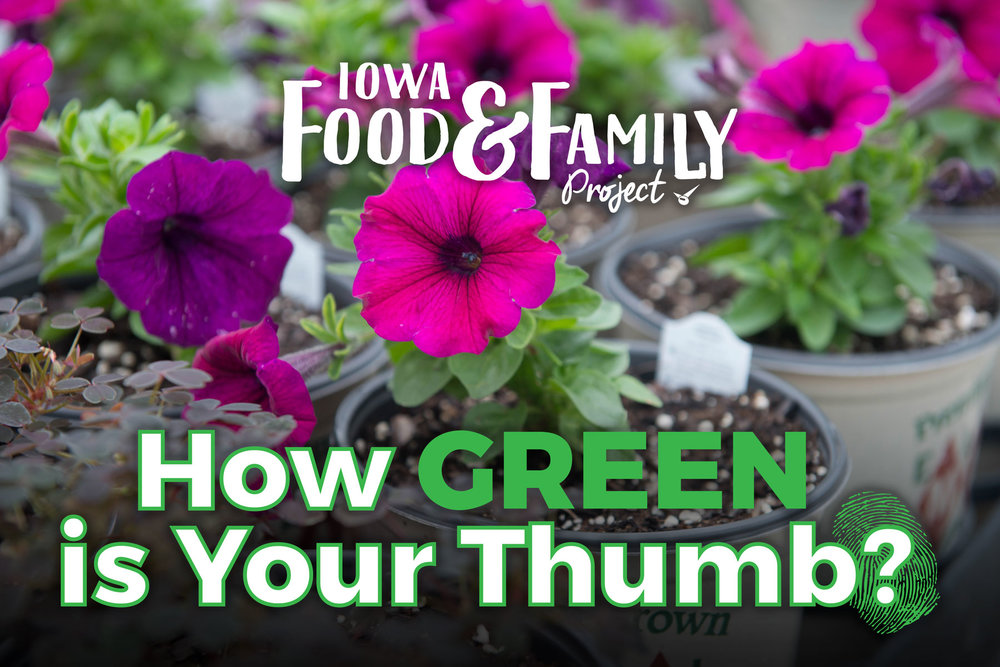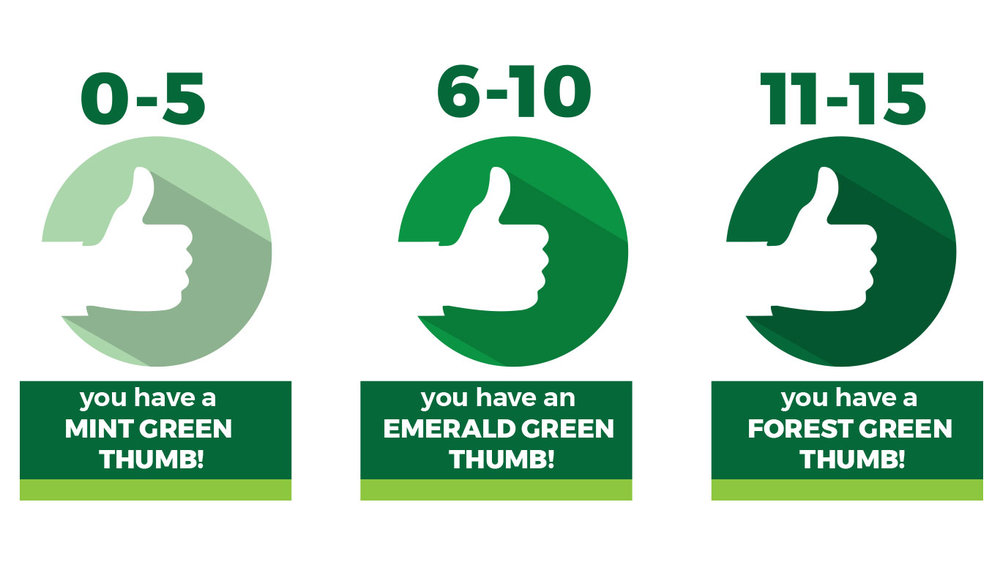Gardening Quiz: How Green Is Your Thumb?
May 2, 2018
By Kelly Visser, Iowa Food & Family Project and Deanna Anderson, Earl May Garden & Nursery Center
As the weather finally warms up across Iowa, gardeners and farmers alike are ready for planting season. Whether you’re using a trowel in your backyard garden or a 12-row planter in a field, your work in the dirt will spark ingenuity and inspire an intense appreciation for where food really comes from.
We’ve teamed up with Earl May Garden & Nursery Center to learn some of the most commonly asked questions about vegetable and flower gardening.

Gardening Quiz Questions
1. For most of us, the frost date in Iowa is:
A: May 1
B: May 15
2. Vegetables that perform better when planted in cooler weather are called:
A: “Cold crops”
B: “Cole crops”
3. Which vegetables should be planted first in the garden?
A: Radishes
B: Peas
C: Onion sets and onion plants
D: All of the above
4. Which vegetables should be planted after the frost date?
A: Tomatoes
B: Peppers
C: Cucumbers
D: All of the above
5. True or false: Raspberries perform better when planted in a container.
A: True
B: False
6. True or false: Onion sets are great for table onions, or green onions. Onion plants should be planted for storing onions.
A: True
B: False
7. Which vegetable works best when planted as seed in the garden?
A: Peas
B: Green beans
C: Sweet corn
D: All of the above
8. Which vegetable works best when planted as plants in the garden?
A: Tomatoes
B: Peppers
C: All of the above
9. When planting seed potatoes, you should make sure each “chunk” has how many eyes?
A: 1
B: 2
C: 5
10. Which of these vegetables do not work well when planted in a container?
A: Tomatoes
B: Salad greens
C: Sweet corn
D: Peppers
E: None of the above
11. True or false: Flavors is best when herbs are cut frequently.
A: True
B: False
12. To create an active pollinator garden, you should include:
A: Perennials
B: Herbs
C: Annuals
D: Water
E: Ornamental grasses
F: All of the above
13. June-bearing strawberries produce fruit how many times per year?
A: 1
B: 2
C: 3
14. True or false: Asparagus should be harvested the first year it is planted.
A: True
B: False
15. How soon can you harvest rhubarb after planting?
A: The first year of planting
B: The second year of planting
C: The third year of planting
Gardening Quiz Answers
1. B. May 15
2. B. “Cole crops”
Cole crops are plants that belong to the mustard family and grow best in cooler weather. Examples include brussels sprout, cauliflower, broccoli, kale and cabbage. Cucurbits are plants that belong to the squash family and grow best in warmer weather. Examples include watermelon, cantaloupe, summer squash, cucumbers, pumpkins and gourds.
3. D. All of the above
Radishes, peas and onions all perform best when planted early in the garden. Plant in 2-week successions for a continuous crop.
4. D. All of the above
It’s best to plant tomato, pepper and cucumbers after the danger of frost and the soil temperatures have warmed. If planted before May 15, be sure to cover the plants to protect from cool temperatures and wind.
5. B. False
Most raspberries should be planted in the ground. Earl May carries a brand of berries called Bushel and Berry® with a Raspberry Shortcake® variety. This plant works perfectly for containers and will produce sweet fruit all season long.
6. A. True
Onion sets work best for green table onions. When left in the ground, these will grow to medium size. Onion plants are the king of the onion crop, as they make the giant prize-winning onions that are mild and sweet.
7. D. All of the above
Peas, green beans and sweet corn all have a relatively quick germination and should be sewn as seed in the garden.
8. C. All of the above
Due to long germination times, tomatoes and peppers should be planted as plants in your garden. You can either start seed indoors in mid-late February or you can purchase established plants at your local Earl May beginning late April.
9. C. 5
The more eyes a seed potato has, the higher the yield.
10. C. Sweet corn
While some people have tried growing corn in containers with limited success. For the greatest yield, we find it better to plant in rows in the ground much like farmers do.
11. A. True
The best flavor comes from harvesting young leaves. Herbs are abundant producers and thrive when continuously harvested throughout the season.
12. F. All of the above
The best pollinator gardens should have a combination of perennials, annuals, herbs and ornamental grasses. Providing a water source, bird bath or fountain, nearby is also essential for attracting a wide variety of pollinators.
13. A. 1
In Iowa, June bearing strawberries typically produce fruit from late May until June. One of our favorites is Honeyoe, which is a prolific producer of large, sweet, dark red berries.
14. B. False
Asparagus should not be harvested until the third year of planting and should be left to go to seed for the first two years. This allows the asparagus bed to become well established so it can continue to produce for many years.
15. C. The third year of planting
Typically, rhubarb should not be harvested until the third year of planting. This allows the plant to become well established and once established, rhubarb will continue to produce for many years.
How green is your thumb?

- If you got 1 to 5 questions correct, you have a mint green thumb! You might still want to go to the grocery store or farmers’ market to pick up your produce this summer. Throughout the growing season, be sure to follow along with our Let’s Grow Together program to learn the basics of gardening and you’ll have an evergreen green thumb in no time!
- If you got 6 to 10 questions correct, you have an emerald green thumb! You know your way around the garden center. While gardening may come more naturally to you, there’s always room to keep learning and asking questions. The next time you’re in Earl May, be sure to ask the gardening experts your tougher gardening questions.
- If you got 11 to 15 correct, you have a forest green thumb! You have a handle on how to make plants bloom. You can take the next step in expanding your gardening perspective by following along with our Let’s Grow Together program to learn some of the practices farmers use to grow corn and soybeans.